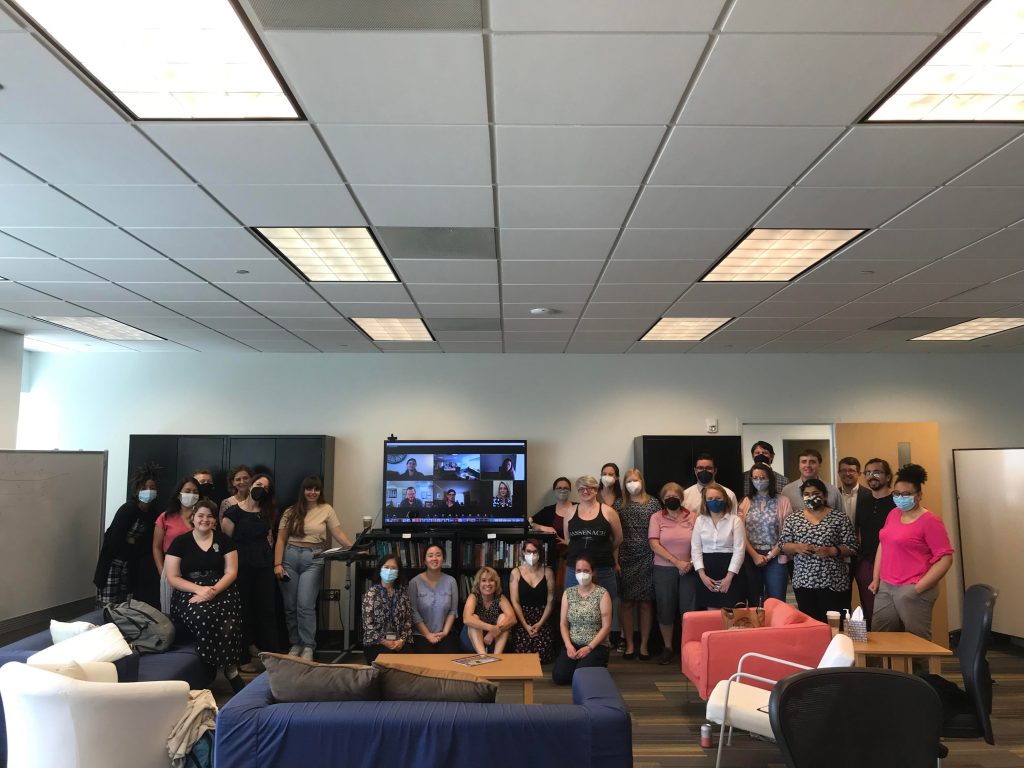RRCHNM Welcomes 25 Graduate Students for the new Academic Year
The start of the academic year at RRCHNM also means the return of many of our graduate students. This week RRCHNM welcomed twenty-five graduate research assistants or graduate affiliates.
Graduate students are a critical part of the work that RRCHNM creates, and RRCHNM is in turn core to the experience of many of the graduate students in GMU’s Department of History and Art History.
A number of the graduate students at RRCHNM are graduate research assistants. As a part of their PhD fellowship from GMU, they work on RRCHNM projects. Coming alongside our faculty and staff, GRAs are full part of project teams. They contribute their expertise on both the subject matter of our projects and on the digital history skills that go into making them. While participating in the projects they learn from the faculty and staff and quickly move from being research assistants in name to research collaborators in fact. Our alumni from RRCHNM take what they have learned to become digital historians in libraries, museums, businesses, research centers, and academic departments.
The kinds of work that GRAs do at RRCHNM can be quite varied. For example, one GRA is working on writing and producing episodes for The Green Tunnel podcast about the history of the Appalachian Trail. Two GRAs are working with our partners at the National Museum of African American History and Culture to create a digital archive from the collections of five HBCUs. Two other GRAs are contributing to large-scale projects to turn historical collections into datasets. And two first-year GRAs are working on World History Commons to create educational resources and lesson plans for K–12 teachers, parents, and students.
Graduate students also are a part of RRCHNM to work on research projects that they start and lead themselves. Our graduate research affiliates—who are MA or PhD students in history or art history, as well as in related disciplines—benefit from the mentoring of RRCHNM’s staff and faculty. We currently have three working groups—on public history, spatial history, and data analysis—meeting regularly throughout the year to discuss works in progress and new publications on these topics. We regularly offer a series on “Basics of” where people at RRCHNM offer one another introductions to podcasting, educational resources, community engagement, various technologies, and so-called “soft skills” such as budgeting, project management. The graduate students themselves also form a community for peer mentoring.
The research projects that graduate students at RRCHNM create lead the field of digital history as much as any of the work by our faculty and staff. PhD students at GMU were the first to create born-digital dissertations. Our affiliates regularly present their research at academic conferences and publish their projects online. A number of our current affiliates are working on digital dissertations that combine visualizations, maps, databases, or public engagement with the prose more typically associated with dissertations.
To most people, RRCHNM is associated with the digital projects that we create and make freely available online. Those online projects are the most visible part of RRCHNM. But another key part of our work is educating students to do digital history so that they can in turn achieve our mission—to democratize history. And that is work we have been doing for decades.

